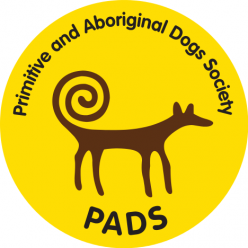Aboriginal
The aboriginal breeds are autochthons. The alternative name ‘aboriginal’ has been chosen because it is more general use. The Random House dictionary defines ‘aboriginal’ as 1. of or pertaining to aborigines; primitive. 2. Native; indigenous; original. ‘Aborigine’ is defined as 1. one of the original or earliest known inhabitants of a country or region 2. the original fauna or flora of a region.
Aboriginal Breeds
There are four basic categories or groups of aboriginal dogs: Nordic/spitz, dingo/pariah, prick-eared hound and gazehound. They fit more than one of the following criteria:
-
They were present in their area of origin before modern (3000 BC or so) non-native human intrusion;
-
They are documented, direct pure descendants of long-term pariahs;
-
They show few, if any, derived characters (other than hairlessness, drop ears and curled tails, which appear to be ancient mutations). A ‘derived’ characteristic is one not found in any species of wild canid or in pariah breeds. Examples are merle or dilute coloration; flattened muzzles.
Primitive
The only truly primitive dogs today are the Australian (and perhaps the Thai) Dingo and the New Guinea Singing Dog. These are the only dogs still living in a totally wild state. Although many have been tamed (as the first specimens brought to their native lands must have been) and so reproduced in and near aboriginal habitation, they have never been domesticated. They are the proto-domesticate ‘generalized’ dog and are, according to the available evidence, still close in morphology, and probably behaviour, to the dogs of about 15000 years ago.
Landrace
A ‘landrace’ is a naturally occurring type of dog ‘breed’ in which the dogs are similar in appearance and usually behaviour. They were created by natural selection for their local environments (example: double vs single coats depending on climate) and through only a small amount of direct artificial selection. These are not ‘pure’ breeds in the modern sense of having a narrow gene pool selected for some purpose, with no other breeds allowed to be crossed in. The oldest pure breeds would be the gazehounds of North Africa, Arabia, Middle Asia/Europe, as these have been maintained by religious edict as the only dog that is not ‘unclean.’ Other landraces maintain their general appearance and temperaments due to only small genetic contributions of foreign dogs being absorbed into the larger landrace, and also because the traits of the foreign dogs are not compatible and cannot be maintained under natural selection. Some ‘pure breeds’ have been created by selecting a few specimens from the larger variation found in the landrace: Kangal Dog, Anatolian Shepherd, Basenji, German Shepherd, Azawakh, Sloughi, Saluki, Afghan Hound, Central Asian Ovcharka, Mongolian Banhaar, Tibetan Mastiff etc.
